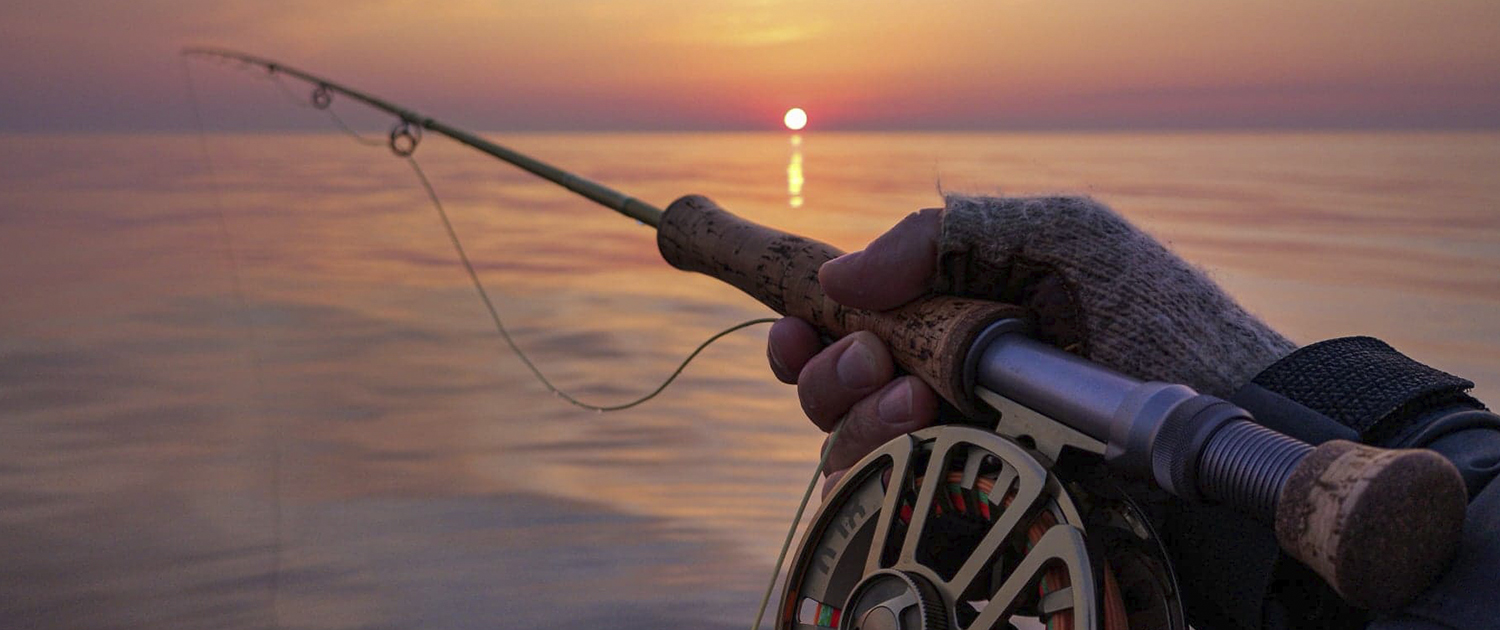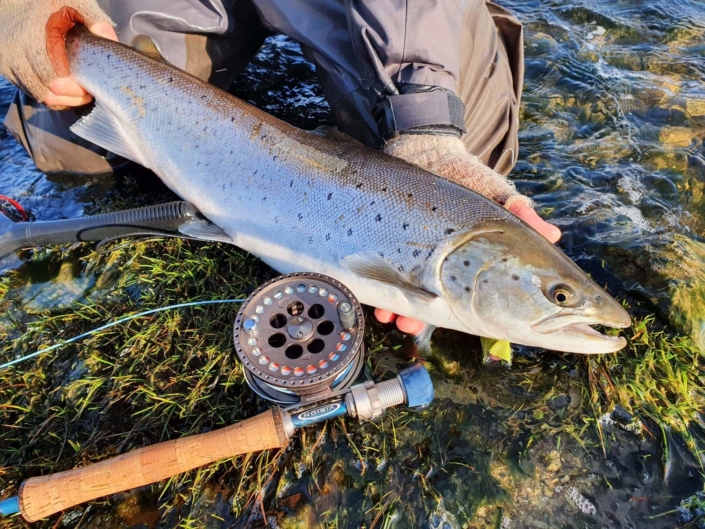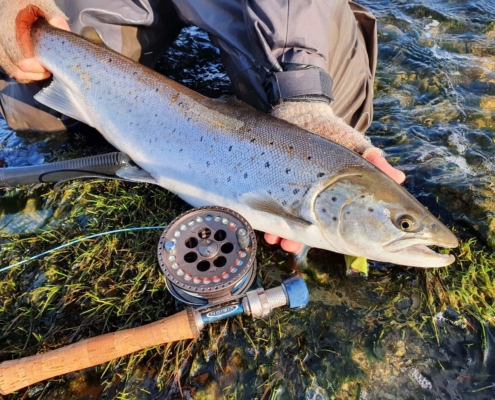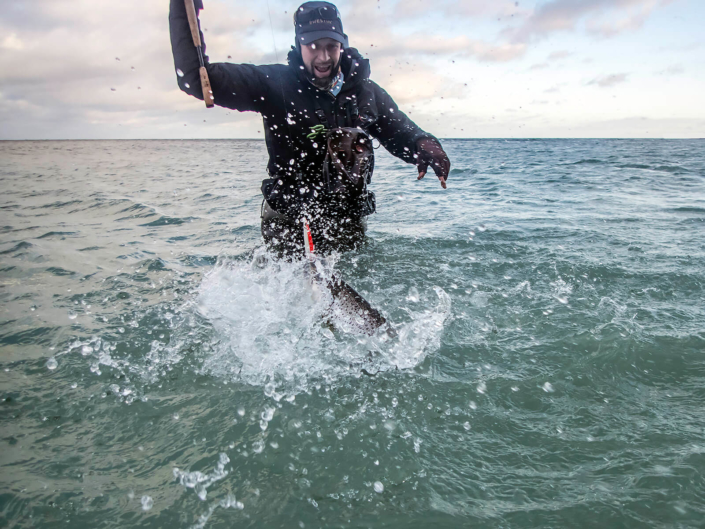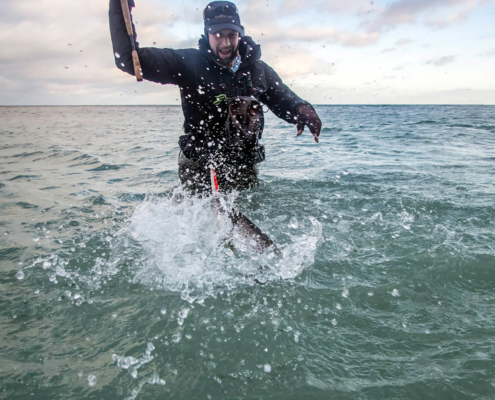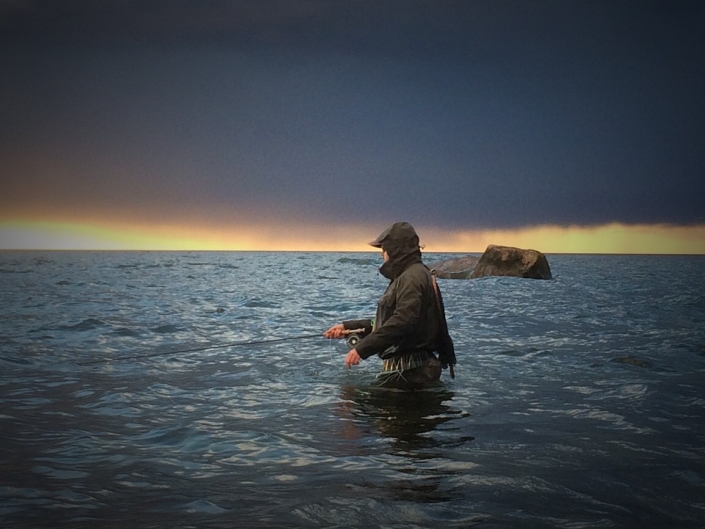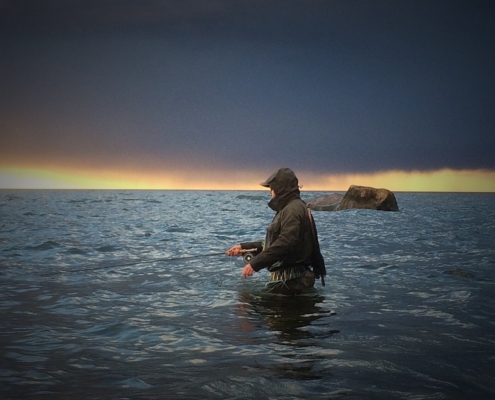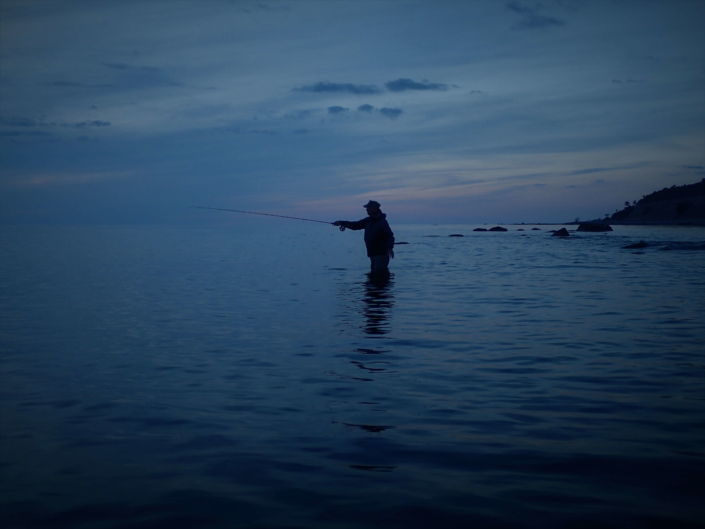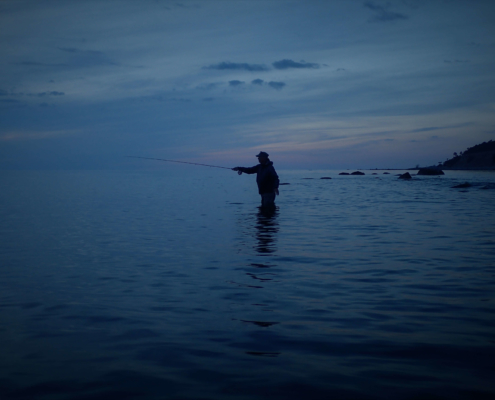Angling on
Gotland
With its 800 kilometres of Baltic Sea coastline, Gotland is seemingly made for sport fishing, using waders and a fly or spin rod. Most anglers come here for the sea trout fishing, during spring or autumn.
The searun brown trout (Salmo trutta) hunting in the quite shallow waters around the island mainly derives from wild fish which spawn in several, tiny streams.
On the Gotland coast you’ll also find other species, for example ide, perch, flounder, northern pike among others.
Coastal Fishing
Angling with a rod, reel and lure is free of charge along the Gotland coast, but there are restrictions areas for protecting the sea trout during spawning time (October 1 – December 31). In these areas fishing is prohibited.
Northern pike and perch are protected 1st of March until 31st of May.
There are also minimum size, maximum size and bag limit – regarding different species of fish.
In addition there are restricted areas to protect birds and wildlife. In these areas fishing is prohibited.
As an angler you must remember to learn about the regulations before fishing. Please, read more here: Fishing Rules.
Welcome to Gotland. Enjoy your fishing and remember to stay safe while fishing.
Sportfishing culture – Advise for a better fishing experience
Gotlands coast and exotic scenery with the chance to catch wild Seatrout attracts many anglers. To preserve this fine fishery for the future and show consideration to fish, nature and other anglers, there are several rules and laws to follow along with a local sportfishing culture developed by Sportfiskarna in collaboration with fishing clubs and the sportfishing industry on Gotland.
Please read through and consider the following advice and feel free to spread them on to your fellow fishing friends, by together contributing for a better fishery and a friendly atmosphere on the coast.
- Make sure to have knowledge of- and respect current fishing regulations. Respect forbidden trespassing in bird-protection areas and roads closed to public. Also regard the ‘off-road driving act’ and the ‘right of public access’.
- Please keep a fish for consumption but limit your outtake. As a rule of thumb: do not keep more fish than you intend to eat. ¨Colored¨ fish (pre- or post-spawned) should always be returned unharmed.
- Large fish are of extra importance for the rejuvenation of new trout and shall thus be released unharmed.
- If you happen to catch a stocked trout (missing adipose fin) or Rainbow trout, be happy to keep it. Keep in mind that min. length of 50 cm applies for both wild- and stocked trout.
- Handle fish that you intend to release carefully. Avoid bringing the fish on to land. Please use a net with rubber-mesh and unhook the fish with a pair of pliers in the water.
- If you want to take photos of a fish to be released, do it as quick and carefully as possible in the water, to minimize the risk of injuring the fish.
- Keep well distance to other anglers and do not go out in front of someone that is already fishing. Please talk to each other to avoid irritation.
- Keep clean and do not leave trash in nature. Please pick up plastic or other trash that you find washed up along the shore.
Take care, safety first – always and enjoy fishing!
Fishing rules
On Gotland fishing for Seatrout is permitted all year around but there are 26 protection areas around the coast where all fishing is forbidden during the period 1 October – 31 December.
All protected areas and their geographical range can be found in the county administrative board’s folder Fiske på Gotland. Further rules and link to the folder is accessible on www.fiskelandgotland.se
Summary of rules for Seatrout fishing on Gotland:
- Minimum length for Seatrout: 50 cm
- 26 protection areas, all fishing forbidden October 1 – December 31.
- Fishing is closed all year on Gotska sandön.
Also remember that:
- Pike and Perch are under protection throughout the coastal zone during March 1 – May 31.
- Keep limit for pike rest of the year: all pike over 75 cm and under 40 cm must be released.
- A maximum of three pike within this size range can be kept.
- The European Flounder is protected during February 15 – May 15.
- Fishing is forbidden in areas with no trespassing, such as bird protection areas during springtime.
